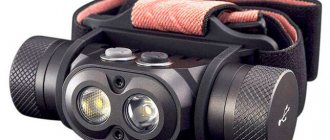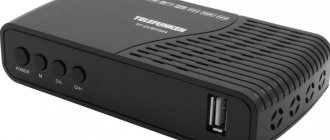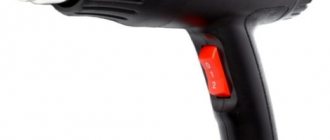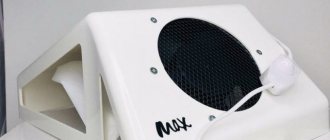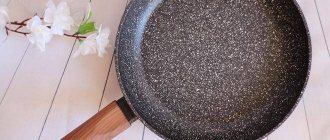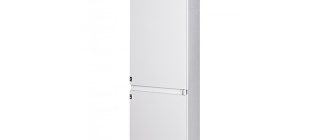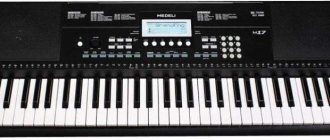How to choose the right speaker system for your home
Before purchasing an acoustic set, you should decide for what purpose the purchase is being made, in which room the equipment will be placed and the desired sound quality. After which the desired price category is set, since the cost of audio equipment fluctuates greatly. When choosing equipment, pay attention to the following selection criteria.
Type of acoustic design. One of the key characteristics that, in fact, distinguishes one speaker system from another. Let's add: if you are a professional. An ordinary person is unlikely to distinguish the sound of a bandpass type from a closed type. But if you attended a music school as a child or just want to get the best, then know that there are five types of acoustic design:
- Bass reflex. The most common type of home acoustics; the vast majority of devices on the market belong to this category. As professionals say, it has good bass, but the sound detail is not great.
- Passive emitter. About the same as the bass reflex type, but the bass is a little better.
- Open speakers (subtype - horn type). If they are strategically placed around the room, you can create that notorious acoustic zone with one hundred percent immersion. However, the bass from open speakers is poor.
- Bandpass housing (aka bandpass). For loudness lovers, speaker systems of this type sound the most powerful.
- Closed type. The most accurate in terms of sound transmission, but the least powerful. And again the problem is with the bass.
Number of stripes. To greatly simplify it, the more bands, the deeper and more voluminous the sound. And more expensive, of course. For home acoustics, the number of bands can be from 1 to 3.5.
Power. For home use, an AC power of 25-40 W is sufficient; for a large room, you can purchase a more powerful system, up to 150 W,
Frequency range. If equipment is purchased primarily for watching movies or computer games, then you should pay attention to speakers that can transmit low frequencies - from 10 Hz. For music lovers, it is preferable to purchase speakers with a frequency capability of up to 40 thousand Hz.
Material for equipment. Wood conveys sound best. The highest quality speakers are made from MDF, less preferably from chipboard; the aluminum body ensures good safety of the equipment, but the sound in it is distorted. Plastic is not durable.
How to choose a speaker system
Before moving on to a review of the technology, it is worth emphasizing several universal points. The choice of acoustics will be successful if you take into account 3 factors:
- Power. This indicator is directly related to the reliability of the equipment. It is selected taking into account the size of the room. So, for a room with an area of 20 m2, 60-80 W acoustics are sufficient. It is important to know that the total power of the satellites must be higher than the power of the amplifier, otherwise the acoustics will not last long.
- Sensitivity. The parameter is responsible for volume, measured in decibels. The higher the numbers, the louder the equipment sounds. The value must be at least 75 dB. It is worth paying attention to this parameter in conjunction with another indicator – resistance.
- Frequency range. The frequency of universal acoustics is usually 20-35 thousand Hz. If the device is used in conjunction with a home theater, the characteristics change. Optimally – 100-20,000 Hz.
These are just a few of the requirements that are worth paying attention to. In addition, it is worth taking a closer look at the characteristics below.
You can read more here: How to choose a speaker system: 3 criteria
Open and closed type acoustics
A closed speaker system is the simplest and most common. In such equipment, the speakers do not have holes. The music sounds a little more muffled here due to the fact that the air is in a closed volume.
Such acoustics will be ideal for lovers of low-frequency sound, for example, blues music.
What about open options? Just from the name alone it is clear that the housing of such equipment is not sealed - there is no wall on the back of the speakers. Often such satellites are large and have several built-in speakers. This design allows you to get sound with low and high frequencies. With such acoustics, all the charm of chamber, classical music, and live performance is revealed.
The devices are suitable for stereo systems and computers. They are also used in recording studios.
Read: How to properly connect a speaker system: 4 methods + setup in Windows
Floor-standing or tabletop speaker system
Floor equipment will show itself “in all its glory” only in a spacious room with a total area of 18 m2. In a small room, such equipment is useless: there is not enough space to fully appreciate the sound.
When choosing such speakers, the amplifier, and specifically its power, requires special attention. The indicator is written in the technical characteristics of the system. If you make the wrong choice and overestimate the capabilities of the equipment, you may encounter a number of problems, for example, turning off the speakers at high volumes.
The best acoustic systems price-quality
DALI SPEKTOR 2
The ceiling system from DALI is in no way inferior to its floor counterpart. This is the optimal solution for small rooms, for which strong power only harms, and floor-standing speakers cannot be installed so easily. The sound will be very good. Another advantage of this system is that for a pleasant sound you don’t need to mess with the settings, or even use the equalizer. They immediately sound right. Technical characteristics:
2-way AC bass reflex type
frequency range 54-26000 Hz
sensitivity 84.5 dB
ordinary
dimensions 170x292x238 mm
Advantages
- Power is perfect for a small room
Flaws
- sometimes you can get “Chinese” build quality
Dali SPEKTOR VOKAL
Compact active speakers are suitable for home or hardware use. The body of the product consists of wood and will decorate any room. The model belongs to the middle price category and pleases users not only with high-quality sound, but also with simple controls. The system can be installed in any room. Specially used technologies make it possible to obtain diffuse sound functions.
Advantages
- universal use
- stylish design
- comfortable feet for installation
Flaws
- not found
YAMAHA NS-SW050
Floor standing subwoofer for home. Complements speaker systems, complements sounds in films and music. Equipped with mono/LFE line input (RCA). Power: from 50 W to 100 W. Frequency range: 25-180 Hz. There is a removable grille, however, to remove it, you will have to make every effort. In their reviews, owners note the compact size, practical form factor, and excellent sound quality. Among budget subs, he is one of the best.
Advantages
- The device’s power is enough for a room of 20-25 m²
- price
- quality of workmanship
- bass is soft and deep
Flaws
- For greater sound purity, it is better not to set the settings to maximum power
- no cutoff frequency control
- Power cord won't come off
- no sleep mode
- no ON/OFF button
Magnat Tempus Center 22
Center 22 belongs to the new Tempus series from a reliable German manufacturer.
The case is reliably assembled, characterized by durability and protection against corrosion. Specifications:
| Location | Shelf |
| Acoustic type | Passive |
| Purpose | Home |
| Peak power | 150 W |
| Frequency range | 34-45000 Hz |
| Sensitivity | 91 dB |
| Impedance | 8 ohm |
| Weight | 6 kg |
Advantages
- availability
- loud speakers
- clear sound
- suitable for home and garden
- increased frequency range
- compact dimensions
Flaws
- not found
YAMAHA NS-F140
The acoustic circuit is two-way. Low and mid frequencies are taken over by a 16-centimeter speaker, while the “top” frequencies are taken over by a 3-centimeter dome tweeter. The sensitivity is not the highest - 86 dB, which must be taken into account when choosing an amplifier. The polar pattern is narrow, so you will have to tinker with the choice of speaker orientation, but you will definitely be pleased with the low distortion (they cross the 1% threshold only at frequencies below 60 Hz, which is expected with such a woofer design), and the frequency response is from 100 Hz to 10 kHz by the standards of budget acoustics, it’s very decent: if you distribute the sound by frequency on an amplifier or receiver, adding a good subwoofer to these speakers and not forcing them to pass through the very bottom part of the spectrum, then the result will definitely please you. Especially for this money.
Advantages
- Design
- Price
Flaws
- Sensitivity to spatial orientation
- The “highs” are rather weak – but in comparison with acoustics of a higher class
The best floor-standing acoustics for the home
Sony SA-CS9
The model is designed to be a quality addition to a home theater or gamer's corner. This is a silent subwoofer that produces vibrations in the range of 28-200 Hz. Together with a subwoofer, it provides surround sound special effects. Thanks to its size of 34.5x29.5x40 cm, you can install the Sony SA-CS9 anywhere, but preferably on a hard and slightly flexible surface.
Advantages
- Takes up very little space
- Attaches firmly to the floor
- Doesn't annoy neighbors with loud noise
Flaws
- Heavy, weight about 11.5 kg
- It is necessary to select a suitable location for installation
YAMAHA NS-F150
Best price. Good voice transmission. Country: Japan (manufactured in Indonesia) Budget HI-FI model of passive type. It features a stylish design and reliable assembly. Connects to a receiver or amplifier and works great in conjunction with subwoofers and other audio equipment. This floor-standing acoustics covers the entire frequency range. There is bass, but not as pronounced as on the sub. Still, the NS-F150 is no longer intended for listening to music, but for watching TV, movies, and games. The middle is not hollow, the tops do not squeak. True, distortion is clearly felt at high volumes. In reviews, owners say that it requires careful setup and a good amplifier/receiver. Out of the box it is unlikely to provide good sound quality.
Advantages
- stylish design
- reliable assembly
Flaws
- rear bass reflex (it is better to place it away from the wall)
- weak tweeters
- complete thin wires
SVEN SPS-750
Double-cavity speakers have a convenient shape and can be installed on the floor or shelf. Externally they have an attractive appearance and will decorate any room. Reproduces sounds of both high and low frequencies with high quality. Wireless connection allows you to place the speakers even outdoors. The system can be controlled using a small remote control.
Advantages
- high-quality sound reproduction
- remote control
Flaws
- Fingerprints remain on the glossy surface
Choosing a receiver and acoustics (budget hi-fi)
Given your budget, it is better to consider the option of a regular stereo Hi-Fi, and even in this case it will most likely have to be increased. At least you won’t experience severe disappointment from a bunch of useless boxes cluttering up the room, which you won’t even want to turn on after a short time.
DAVIS ACOUSTICS KvK 5 set MKII
There is a 100% probability that they will drone in a room of less than 30 sq.m. In combination with inexpensive receivers, they are simply unable to adequately reproduce music. Quite a strong hump at 70-150 Hz, lubricating the lower mids and spreading the parasitic effect up to the crossover frequency in the midrange; the Kevlar midrange driver only enhances it. A characteristic sound for inexpensive cinema and theater acoustic sets, designed to provide a short-term wow effect for a potential buyer, but ultimately leading to an unacceptable distortion of the tonal balance and rapid fatigue when listening to music. In conjunction with mass-produced budget receivers, the sound can be succinctly described in one term - loud.
Mordaunt Short, Carnival 2 front, Carnival 5 center, Carnival 1 rear.
In principle, an option that has a right to exist and sounds quite decent in small living rooms. I can draw a conclusion only from the nature of the sound of its individual components in stereo (I haven’t heard it as a set, but based on many years of experience I can make a fairly confident assumption). BUT:
- connect it to cheap Yamahas, Denons, etc. means simply throwing money away;
- require the purchase of acoustic stands (required!) and placement of at least the fronts in a sufficient free field (at least 20 cm from the rear wall (FI at the front of the speakers) and about 30 cm from the sides, and preferably 40-50 cm). For the rear junior Carnival, this parameter is leveled to a minimum and, in principle, they can be mounted on the wall;
— it is necessary to connect ALL speakers of this set, with the exception of the subwoofer, with high-quality speaker cables with the so-called. “silver-plated” conductors, such as the QED Silver series. OFC copper will give some lack of air at the HF and they will sound aggressive, with a tendency to lisp (these speakers are very sensitive to the quality of the cables);
— the minimum receiver for this kit is the Cambridge CXR120;
— the kit needs subwoofer support for cinema, but the proposed sub (Carnival 7) is better to bypass the tenth road, look towards the initial REL, you can easily buy it on the secondary.
As a result, you will get a good seamless covering of a room of 20-24 sq.m. in a movie with a fairly good implementation of surround effects, but in a small comfort zone (for about a couple of people on the couch), the playback level of a regular stereo is the same as that of a good budget Hi-Fi system (it’s better to turn off the sub, or immediately set its cutoff frequency to no higher than 70 Hz and carefully phase with the fronts). If we consider from the point of view of budgetary costs, then the option of a recreation center for the living room, taking into account racks, cables, receiver and speakers, will cost approximately from 200 tr., cheaper options are a waste of money and a sea of disappointment, which can “delight” only inexperienced teenagers and extremely unpretentious consumers who buy DCs on the “shob bulo” principle, for half the amount you can buy a good stereo setup with a much more predictable and high-quality result.
If you are potentially not ready to make such expenses, then it is better to focus on a soundbar or so-called. DC “out of the box”, i.e. completely ready-made kits from one manufacturer. At least you will experience less disappointment and save money.
The best powerful budget speakers (loud)
Pioneer S-DJ50X
Monitor speaker measuring 197x301x262 mm, capable of playing music at volumes up to 107 dB. Suitable for parties with electronic music. Low-frequency speakers with modest sizes reproduce dense and clear sound.
Advantages
- Provides automatic shutdown after 25 minutes
- Great bass
- Good design
- There are white and black color options
Flaws
- They may make noise when plugged into an outlet.
Heco Victa Prime Center 102
Heco Victa Prime Center 102 is a center channel speaker system. It is best suited for watching videos. The human voice and vocals sound natural in the audio system, which is valuable for use in a home theater. It is worth noting the quality of the external finish: the matte surface, made to look like dark wood, highlights the polished metal of the speaker rim.
Advantages
- Clearly reproduces the human voice
- Looks like a premium product
- Compact monoblock
Flaws
- For comfortable listening to music, it is better to complement with other speakers
JBL Control 62P
JBL Control 62P is an exception to the rule that powerful inexpensive speakers only come in large sizes. The small and durable speaker has a power of 50 W and a sensitivity of 103 dB. It can be used as a portable one, as it comes with convenient mounts and durable cables for connection. There is no need to throw away your hard-earned money trying to achieve the ideal sound of your audio system. As you can see, for every task there is a solution with high-quality sound and ease of use at a low price.
Advantages
- Very loud for a size just over 12x12x12 cm
- Good sound even in rooms with high ceilings
- Shockproof housing
- Hanging systems included
Flaws
- Single lane
Shelf
Denon SC-N9
pros
- Build quality
- Durable and beautiful lacquer finish
- Can be placed horizontally or vertically
Minuses
- Poor compatibility with many media centers
From 7,490 ₽
This model has the usual characteristics for the budget segment: two-band frequency range 50-20000 Hz, sensitivity 83 dB, maximum power 120 W. A good speaker for basic audio playback, provided the device has a nice design. When choosing a suitable media center and the right settings, the inexpensive Denon SC-N9 is suitable for home use.
Heco Victa Prime Center 102
pros
- Clearly reproduces the human voice
- Looks like a premium product
- Compact monoblock
Minuses
- For comfortable listening to music, it is better to complement with other speakers
From 8,900 ₽
Heco Victa Prime Center 102 is a center channel speaker system. It is best suited for watching videos. The human voice and vocals sound natural in the audio system, which is valuable for use in a home theater. It is worth noting the quality of the external finish: the matte surface, made to look like dark wood, highlights the polished metal of the speaker rim.
Onkyo SKH-410
pros
- Dolby Atmos format
- Compatible with many media centers
- Interesting speaker placement option
Minuses
- Spring terminals
From 7,990 ₽
This bookshelf speaker is one of the cheapest speakers that supports Dolby Atmos. Thanks to Atmos, with small speaker sizes, the effect of sensing where the sounds are coming from is achieved: the sound of a ball will come from the floor, and a thunderclap will come from somewhere in the sky. The laminated wooden case and special anti-vibration feet help not to spoil the sound.
You might be interested in:
- TOP 12 best budget speakers for computers and laptops
- TOP 18 best computer speakers
Expert advice
In order for the acoustics to fully fulfill all its characteristics, it is necessary to carefully approach the choice.
- Type. Acoustics are divided into passive, active and hybrid. The first does not require a line signal and power supply to all speakers, but requires an external amplifier. The second is portable, compact, and easy to set up. Hybrid systems include passive speakers and an active subwoofer.
- Number of stripes. The optimal option is two: one is responsible for the lows (and the bottom of the midrange), and the second is responsible for the highs (and the top of the midrange). Of course, a 3-way speaker system provides better sound quality, since different drivers are responsible for the lows, mids and highs. But the average user is unlikely to be able to notice serious differences, but he will have to overpay for such speakers.
- Power. The sound quality depends on this parameter. Based on the area of the premises, a speaker with a power of up to 70 W is sufficient for rooms up to 20 m2. If you need to cover 30 “squares”, then 100 W will be the best option. Rooms over 30 square meters will require 150 W or more.
- Sensitivity. Determines the sound volume taking into account the specified power. As a rule, indicated in dB/W/m: the sound pressure of a radiator with a power of 1 W at a distance of a meter. Sensitivity up to 88 dB is considered low; with a value from 89 to 92 – average; in the range of 94-102 dB – high.
- Frequencies. Conventionally, frequencies perceived by the human ear can be divided into three categories: high, medium and low. If acoustics are purchased for cinema, then they must cover the range from 100 Hz to 20 kHz. For universal models it should be wider (about 20-35000 Hz).
- Interfaces. RCA is necessary for single-channel audio transmission, but the connector's noise immunity is low. XLR, on the contrary, is highly immune to interference. It is considered a professional interface. The acoustics can also be equipped with TRS (3.5 and 6.35 mm), Speakon (needed in concert equipment), etc.
Glossary
Bass
Low frequency sound is often difficult to reproduce. It is less directional than mid and high frequencies.
W
Always look for numbers marked "RMS" (Root Mean Square).
Top
The highest sounds. Unlike bass, HF is highly directional, so precise speaker placement is very important.
Dual cable connection
Speakers with separate crossovers and two sets of terminals can be connected with two cables, which will provide higher quality sound.
Two-way speakers
Most speakers have two drivers and a crossover to split the signal. Some speakers have three or more speakers; if a crossover divides the input signal into three frequency ranges, such models should be called three-band.
Speakers
Sound emitters. Mid/bass speakers are responsible for low or mid frequencies, tweeters are responsible for high frequencies.
Allowable power
Highest power safe for speakers. When overloaded, the speaker is more likely to be damaged by an amplifier with a lower output power than with a high one.
Speaker terminal
The connector has a threaded washer for clamping the bare wires and sometimes a connector for a banana plug.
Crossover
An electrical circuit inside a speaker that divides the input signal into high- and low-frequency components and sends the first to the tweeter and the second to the midrange/woofer.
Middle
The frequency range in which most instruments and the human vocal apparatus emit sound.
Resistance
The higher this indicator, the easier it is for the amplifier to drive the speakers.
Bass reflex
This design element provides more powerful low frequencies due to the air flow from the port to the cabinet.
Frequency
The frequency of sound is measured in hertz (Hz). A 1 Hz signal travels one cycle per second. The highs have a high frequency, while the bass has a low frequency. A healthy human ear on average hears sounds with frequencies ranging from 20 Hz (low) to 20 kHz (high).
Sensitivity
An indicator of the relationship between the power of the electrical signal supplied to the speaker and the sound emitted by it. It is easier for the amplifier to “pump” speakers with high sensitivity. It is usually expressed in dB/W/m (the sound pressure level in decibels generated by an input signal power of 1 W, measured at 1 meter from the speaker). Most speakers have a sensitivity of 86–91 dB/W/m.
